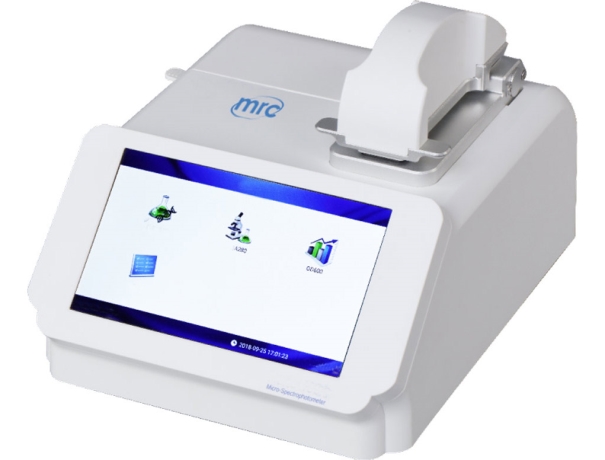A micro spectrophotometer is a compact analytical instrument used to measure the absorbance or transmittance of light through tiny samples, often as small as one microliter. It operates on the same principles as traditional spectrophotometers but is specially designed for analyzing micro-volume samples, making it indispensable in labs where sample availability is limited.
Importance of Micro Spectrophotometers in Modern Science
With advancements in science, especially in fields like genomics, proteomics, and nanotechnology, the ability to analyze small quantities of material with high precision has become crucial. A micro spectrophotometer allows researchers to perform highly sensitive and accurate measurements without wasting precious samples.
Applications of Micro Spectrophotometers
Micro spectrophotometers find applications in various fields, including molecular biology, chemistry, pharmaceuticals, and materials science. Their ability to handle small volumes while providing reliable data makes them a versatile tool for laboratories.

How Micro Spectrophotometers Work
Spectrophotometry is the science of measuring how much light a substance absorbs. A micro spectrophotometer passes light through a sample and measures how much light is absorbed or transmitted, giving insight into the sample's concentration and composition.
The key difference with a micro spectrophotometer is that it can perform these measurements on tiny amounts of material, usually in the range of 1–2 microliters. This is especially useful when working with expensive or hard-to-obtain substances, such as nucleic acids or proteins.
Components
Light Source
The light source provides the necessary illumination for the measurement process. It can range from UV to visible light, depending on the sample being analyzed.
Optical System
This system directs the light toward the sample and splits it into specific wavelengths, which are essential for accurate measurements.
Detector
The detector captures the light that passes through the sample and measures its intensity, which is then used to calculate absorbance or transmittance.
Sample Stage
A micro spectrophotometer comes with a specialized sample stage designed to hold micro-volume samples securely in place during analysis.
Measuring Absorbance and Transmittance
By analyzing how much light is absorbed (absorbance) or how much passes through the sample (transmittance), a micro spectrophotometer can quantify the concentration of molecules like DNA, RNA, or proteins in the sample.
Types of Micro Spectrophotometers
UV-Visible Micro Spectrophotometers
These are the most common types and are used for analyzing nucleic acids, proteins, and other biological molecules.
Fluorescence Micro Spectrophotometers
These models are specialized for fluorescence-based measurements, which are useful for detecting very low concentrations of compounds.
Raman Micro Spectrophotometers
Used primarily in material science and chemistry, Raman micro spectrophotometers are valuable for studying molecular vibrations and compositions.
Advantages
Minimal Sample Volume Requirement
The most significant advantage of micro spectrophotometers is their ability to work with very small sample volumes, reducing waste and preserving precious materials.
High Sensitivity and Precision
These devices provide highly accurate readings, even with tiny amounts of sample, making them ideal for sensitive applications like genetic analysis or drug testing.
Versatility in Applications
From measuring DNA concentration to analyzing nanomaterials, micro spectrophotometers can be used across various scientific fields.
Ease of Use and Portability
Most micro spectrophotometers are designed to be user-friendly and portable, making them suitable for use in both lab and field settings.
Key Applications
DNA, RNA, and Protein Quantification
In molecular biology, accurately measuring the concentration of DNA, RNA, or proteins is critical, and micro spectrophotometers are the go-to tool for this task.
Pharmaceutical Quality Control
Pharmaceutical companies rely on these devices for ensuring the quality and consistency of their products, particularly during drug formulation and testing.
Clinical Diagnostics
Micro spectrophotometers play a role in clinical diagnostics by measuring biomarkers in bodily fluids, helping with early detection of diseases.
Nanomaterial Research
The ability to analyze small samples makes micro spectrophotometers valuable in the growing field of nanotechnology, where materials are often available only in minute quantities.